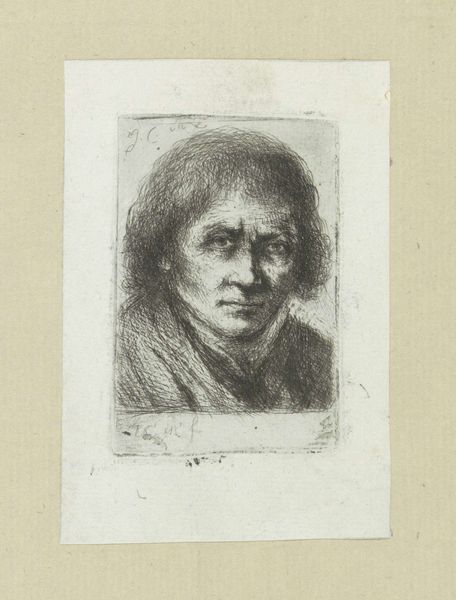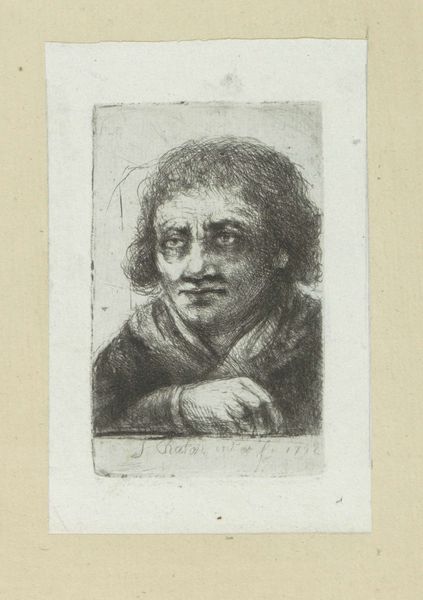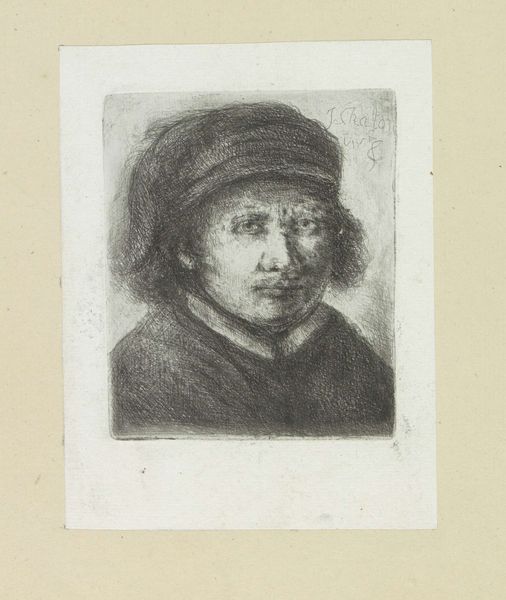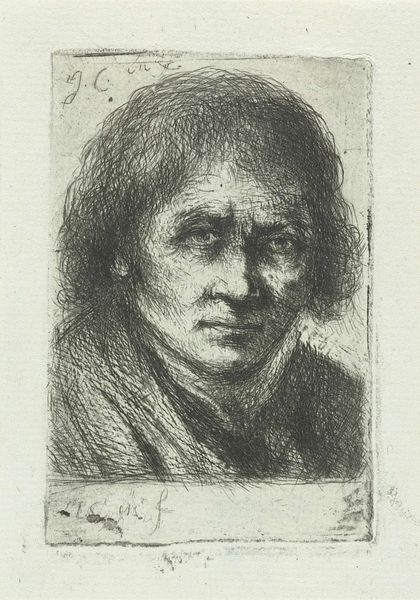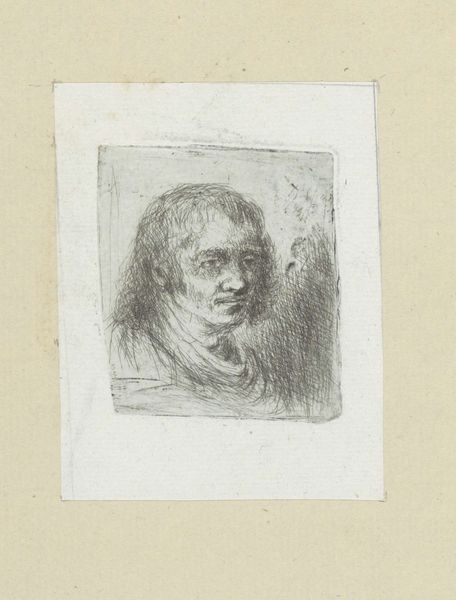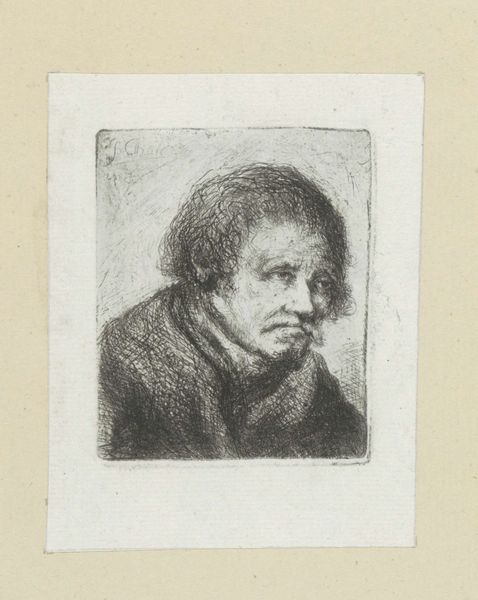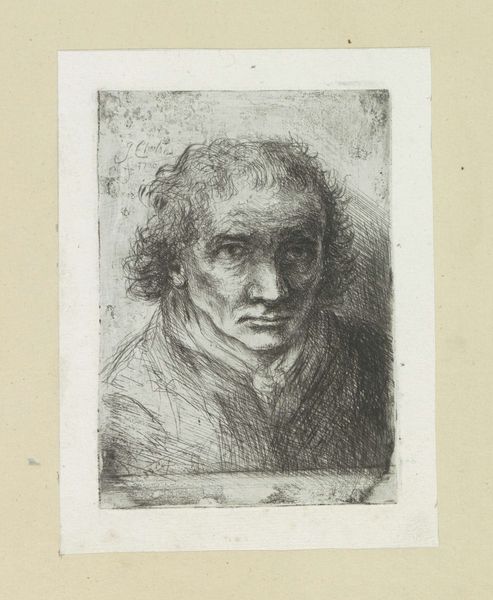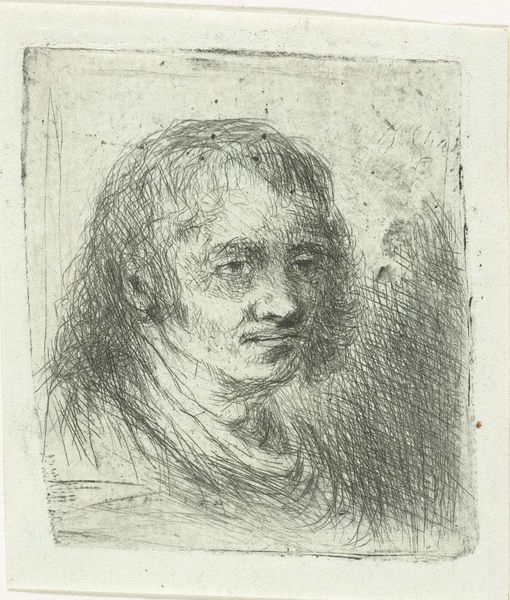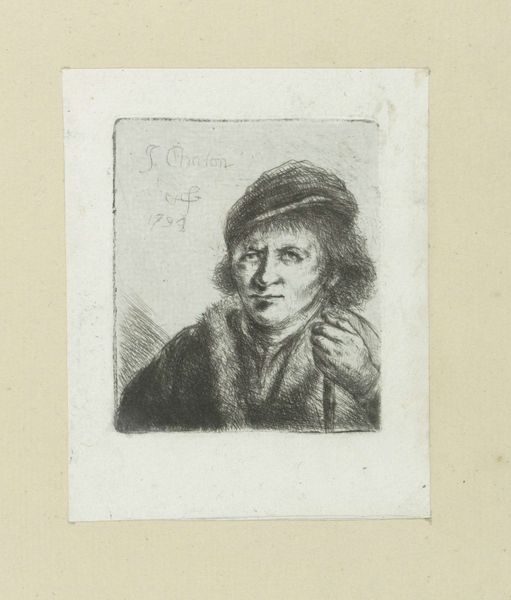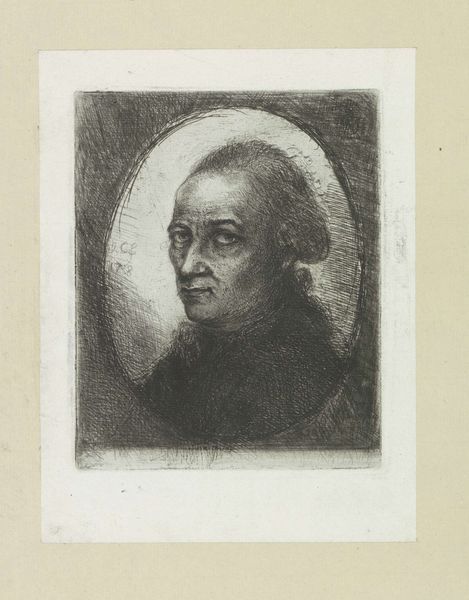
drawing, pencil, graphite
#
portrait
#
pencil drawn
#
drawing
#
light pencil work
#
pencil sketch
#
charcoal drawing
#
portrait reference
#
pencil drawing
#
romanticism
#
pencil
#
graphite
#
portrait drawing
#
pencil work
#
tonal art
#
graphite
Dimensions: height 116 mm, width 94 mm
Copyright: Rijks Museum: Open Domain
Editor: This drawing, "Volwassen man, naar links," was created around 1802 by Jan Chalon using graphite or pencil. It’s interesting how raw the medium looks—very sketchy and immediate. What can you tell me about the artistic choices made? Curator: Consider the labor involved in a piece like this. Graphite and pencil, readily available materials, democratize artmaking. The emphasis isn't on expensive pigments or elaborate techniques, but on direct mark-making. Do you think that challenges notions of what constituted “high art” at the time? Editor: It definitely feels more accessible, more like a study than a finished piece. Is it the artistic intent or just the chosen medium? Curator: I would say both, but consider how the means of production influence our perception. The visible strokes, the lack of idealized form – these aspects highlight the materiality and the process of creation itself, don’t you think? How does the surface play with your experience of the image? Editor: It's like seeing the artist thinking, figuring out the form on the paper itself. So, in essence, by focusing on simple materials like pencil and paper, and visible labor of sketch lines, this portrait achieves its power by inviting viewers to consider more egalitarian forms of art production, then? Curator: Exactly. And that challenges traditional art hierarchies by demonstrating value in process and accessibility rather than rarefied skill. Now how does the Romantic era relate to that idea? Editor: That’s so helpful to unpack the artwork's value by focusing on materiality and social context. Thanks! Curator: Indeed, it provides new entry points.
Comments
No comments
Be the first to comment and join the conversation on the ultimate creative platform.
